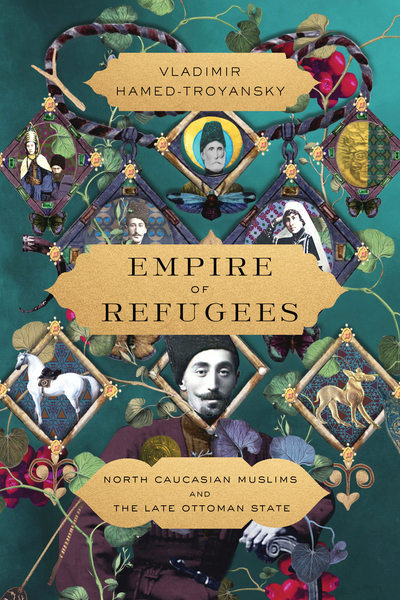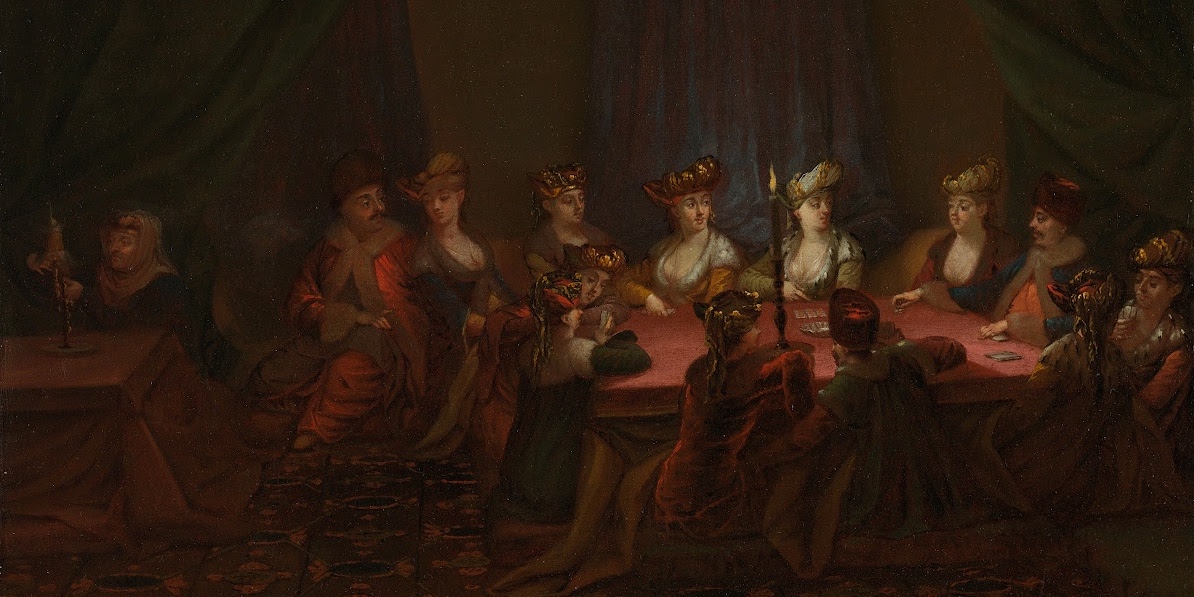North Caucasian Refugees and the Late Ottoman State
| During the late 19th and early 20th century, tens of millions of migrants crossed the seas, settling in the Americas and beyond in a mass migration event that reshaped politics and economies throughout the world. In this episode, we focus on one of the most ignored groups within the history of those momentous events: North Caucasian Muslims. As our guest, Vladimir Hamed-Troyansky, explains, North Caucasian refugees fleeing Russian expansion became a large segment of the Ottoman migrant (muhacir) population and in turn, became a major new demographic component, constituting about 5% of the empire's citizens by WWI. Under the Muhacirin Commission created to facilitate their movements, they settled in remote provinces, from the edges of the Syrian desert to the plateaus of Central Anatolia, founding what would become major cities like Amman (modern-day Jordan) and constructing new diasporic identities in the process. As we discuss, these migrations not only changed the millions of people who became Ottoman refugees during the empire's last decade and their communities back home. They changed the nature of the Ottoman state itself.
 | Click for RSS Feed | 
|

|
During the late 19th and early 20th century, tens of millions of migrants crossed the seas, settling in the Americas and beyond in a mass migration event that reshaped politics and economies throughout the world. In this episode, we focus on one of the most ignored groups within the history of those momentous events: North Caucasian Muslims. As our guest, Vladimir Hamed-Troyansky, explains, North Caucasian refugees fleeing Russian expansion became a large segment of the Ottoman migrant (muhacir) population and in turn, became a major new demographic component, constituting about 5% of the empire's citizens by WWI. Under the Muhacirin Commission created to facilitate their movements, they settled in remote provinces, from the edges of the Syrian desert to the plateaus of Central Anatolia, founding what would become major cities like Amman (modern-day Jordan) and constructing new diasporic identities in the process. As we discuss, these migrations not only changed the millions of people who became Ottoman refugees during the empire's last decade and their communities back home. They changed the nature of the Ottoman state itself.
Contributor Bios
 |
Vladimir Hamed-Troyansky is Assistant Professor of Global Studies at the University of California, Santa Barbara. His research examines Muslim refugee migration and its role in shaping the modern world. He is the author of Empire of Refugees: North Caucasian Muslims and the Late Ottoman State (Stanford University Press, 2024). |
 |
Chris Gratien is Associate Professor of History at University of Virginia, where he teaches classes on global environmental history and the Middle East. His first book, The Unsettled Plain: An Environmental History of the Late Ottoman Frontier, explores the social and environmental transformation of the Adana region of Southern Turkey during the 19th and 20th century. |
 |
Can Gümüş is a doctoral candidate and researcher at Boğaziçi University's Atatürk Institute. Her dissertation examines the intersections of public health and urbanization in the late Ottoman Empire. |
Credits
Episode No. 566
Release Date: 29 August 2024
Sound production by Chris Gratien
Music: Aitua; A.A. Aalto
Bibliography and images courtesy of Vladimir Hamed-Troyansky
Release Date: 29 August 2024
Sound production by Chris Gratien
Music: Aitua; A.A. Aalto
Bibliography and images courtesy of Vladimir Hamed-Troyansky
Further Listening
 |
Ella Fratantuono | 331
9/1/17
|
Migrants in the Late Ottoman Empire |
 |
Şölen Şanlı Vasquez | 513
9/16/21
|
The Circassian Diaspora |
 |
Lale Can | 191
4/18/15
|
Central Asians and the Ottoman Empire |
 |
James Meyer | 185
2/14/15
|
Turks Across Empires |
 |
Zeynep Gürsel | 502
6/9/21
|
collaboration with AnthroPod
|
 |
Chris Gratien | 523
3/11/22
|
An Environmental History of the Late Ottoman Frontier |
 |
Eileen Kane | 219
1/7/16
|
Russian Hajj |
Images

Fuat Khutat. Photograph taken sometime in the 1890s. Source: Khutat Family Collection, Amman.

Map of North Caucasian villages in the Ottoman Empire, 1914. Source: Hamed-Troyansky, Empire of Refugees, 73.

Map of Ottoman Uzunyayla, 1914. Source: Hamed-Troyansky, Empire of Refugees, 160.
Further Reading

Hamed-Troyansky, Vladimir. Empire of Refugees: North Caucasian Muslims and the Late Ottoman State. Stanford University Press, 2024.
Barakat, Nora Elizabeth. Bedouin Bureaucrats: Mobility and Property in the Ottoman Empire. Stanford University Press, 2023.
Besleney, Zeynel Abidin. The Circassian Diaspora in Turkey: A Political History. Routledge, 2014.
Can, Lâle. Spiritual Subjects: Central Asian Pilgrims and the Ottoman Hajj at the End of Empire. Stanford University Press, 2020.
Fratantuono, Ella. Governing Migration in the Late Ottoman Empire. Edinburgh University Press, 2024.
Gratien, Chris. The Unsettled Plain: An Environmental History of the Late Ottoman Frontier. Stanford University Press, 2022.
Hamed-Troyansky, Vladimir. “Circassian Refugees and the Making of Amman, 1878–1914,” International Journal of Middle East Studies 49, no. 4: 605–23.
---. “Letters from the Ottoman Empire: Migration from the Caucasus and Russia’s Pan-Islamic Panic,” Slavic Review 82, no. 2: 311–33.
Kane, Eileen. Russian Hajj: Empire and the Pilgrimage to Mecca. Cornell University Press, 2015.
Kasaba, Reşat. A Moveable Empire: Ottoman Nomads, Migrants, and Refugees. University of Washington Press, 2009.
Meyer, James H. Turks Across Empires: Marketing Muslim Identity in the Russian-Ottoman Borderlands, 1856–1914. Oxford University Press, 2014.
Turkish-Language Works
Aksoy, Elbruz. Beyaz Köleler: Son Sesler. Istanbul: İletişim Yayınları, 2022.
Habiçoğlu, Bedri. Kafkasya’dan Anadolu’ya Göçler. Istanbul: Nart Yayıncılık, 1993.
Saydam, Abdullah. Kırım ve Kafkas Göçleri, 1856–1876. Ankara: Türk Tarih Kurumu, 1997.
Russian-Language Works
Bobrovnikov, Vladimir O. and Irina L. Babich. Severnyi Kavkaz v sostave Rossiiskoi imperii. Moscow: Novoe Literaturnoe Obozrenie, 2007.
Chochiev, Georgy. Severokavkazskie (cherkesskie) organizatsii v Turtsii (1908–1923 gg.). Vladikavkaz: SOIGSI, 2009.
Kushkhabiev, Anzor V. Cherkesskaia diaspora v arabskikh stranakh: XIX–XX vv. Nalchik: KBNTs RAN, 1997.
Arabic-Language Works
Mamsir Batsaj, Muhammad Khair. Al-Mawsu‘a al-tarikhiyya li-l-umma al-sharkasiyya “al-adigha”: min al-alf al-‘ashir ma qabla al-milad ila al-alf al-thalith ma b‘ada al-milad. 6 vols. Amman: Dar al-Wa’il, 2009.
Nashkhu, Jawdat Hilmi. Tarikh al-sharkas (al-adighah) wa al-shishan fi liwa’i Hawran wa al-Balqa’ (1878–1920). Amman: Lajnat Tarikh al-Urdun, 1998.











Comments
Post a Comment
Due to an overwhelming amount of spam, we no longer read comments submitted to the blog.